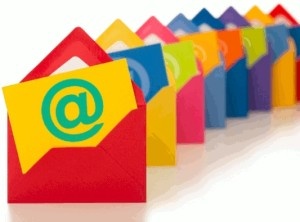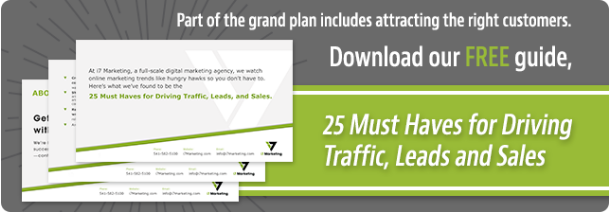 Email is a cost-effective way to communicate with your audience.
Email is a cost-effective way to communicate with your audience.Strategy 1: Send Emails to Your Target Audience
The most important thing you can do to increase your email response rate is to choose the best target audience. This means that you need to find out the characteristics of those who are most likely to buy your products and services.
Would you respond to an email from a manufacturer or provider of a product or service you had no interest in buying?
Probably not. Well, that’s true for the people who are not your target audience.
The more information you know about your contacts, the better off you are in segmenting your database to determine who to send your email to. If your company has 10,000 names of prospects but only 2,000 fit your target audience, does it make sense to send an email to all 10,000 prospects?
Let’s say among those 2,000 that fit your target audience, you can get 200 sales orders. If you sent an email to all 10,000 contacts your response rate would be 2%, whereas your response rate would be 10% if you mailed only the 2,000 that fit your target audience. That’s a five times higher response rate at one-fifth the cost. Therefore, your ROI can be so much higher by emailing to your target audience.
This is the strategy that Artbeads, an online jewelry company, did to get a 208% higher response rate on a much smaller budget than they had before. Marketing Sherpa reported this case study in May, 2012. Artbeads wanted to change its strategy from sending weekly emails to their whole list to a smaller list to boost response rates. The campaign targeted past customers who made only one purchase in the last 18 months and ranked in the top 25% of all orders placed in that period. The number of targets was less than 10% of their database. The result was a response rate 208% higher than their typical batch-and-blast emails to their whole database.
Strategy 2: Use a Branded Domain Name Email Address
One of the big reasons why people do NOT open emails is because it looks like spam. This is especially true if your audience does not recognize the email address you are sending your message from. Sending your email from a free public email domain address like Yahoo! or Gmail also lowers your chances that your audience will open their email. That’s because anonymous users located anywhere in the world can open an email account with a free public domain address..
A better strategy is to have your own domain name email address that includes your brand name, according to an article that Search Engine Journal published in May, 2013. For example, if the brand name of your company is “Scrumptious Cookies” then you ought to have a domain email address yourname@scrumptiouscookies.com. Your brand name in your email address makes your email look authentic. People will trust it more than they will if your email is a free public domain.
Another reason why your audience will more likely open an email from a branded domain name is because it confirms that a real company and not a bulk email house sent the email. If you are a B2B company this is even more important. That’s because many of your prospects and customers may have invested in strong spam filters. These filters could block emails from public domains or bulk email houses, whereas it would allow your email from a branded domain name to get to your audience.
Strategy 3: Create an Intriguing Subject Line
Subject lines are the gateway to your message. An intriguing subject line builds interest and curiosity. This induces your reader to open the email. However, a less intriguing subject line may stave off the reader from ever seeing your message.
There are many types of intriguing subject lines. Here are four types.
Personalizing your subject line by including your prospect’s first and last name is a great strategy. There are no words that get the attention of your reader more than his or her name. By including the name, you are making a statement that the message inside is just for that reader.
A second way is by asking a question. This makes your prospect curious to find or confirm the answer. The only way for them to find out is by opening the email.
Adding special characters to your subject line can make it stand out. So you grab your prospect’s attention. When you use symbols that accent the message it makes it even more effective. An example of this strategy is how Travelocity sends their emails with an airplane character.
![]()
Strategy 4: Include Persuasive Copy
Now that you’ve got your audience to open your email, you’ve got to get them to read and complete your message. That’s perhaps your biggest challenge, considering the little time people have.
The best strategy is for your message to contain persuasive copy. Persuasive copy grabs your audience with a strong headline and an emotionally compelling lead. The body copy should also contain benefits for the reader regarding the topic.
Persuasive copy is especially vital if your email message is promoting the sale of a product or service. The more persuasive the copy is, the higher your rate for sales conversion.
Strategy 5: Have a Strong Call to Action
A strong call to action gets your reader to where you want him or her to go. If you are selling a product or service, your call to action could take the reader to your shopping cart to place an order.
One way you can boost response rates with a strong call to action is by creating a sense of urgency. For example, establish a firm deadline for your offer. When you create a sense of urgency, you can compel the reader to fulfill your goal.
Another way is by offering a free gift if they respond. Make your gift appear just as valuable as the product you are selling.
To quicken your response, tell the reader your offer is good for only the first “x” number of people who respond.
Strategy 6: Follow-Up
The last strategy is to follow up. You’d be surprised how many of your prospects will respond to your emails on the second, third, or fourth time or beyond. Some prospects may not have opened your prior emails. Others may have opened them but not read through it. Then there are others who may be interested but need a reminder to push them over the edge.
In summary, email marketing can be a great way for you to reach and compel your audience to buy your products or services. When you follow the above steps, you can enhance your response rates.



Submit a Comment
Your email address will not be published. Required fields are marked *